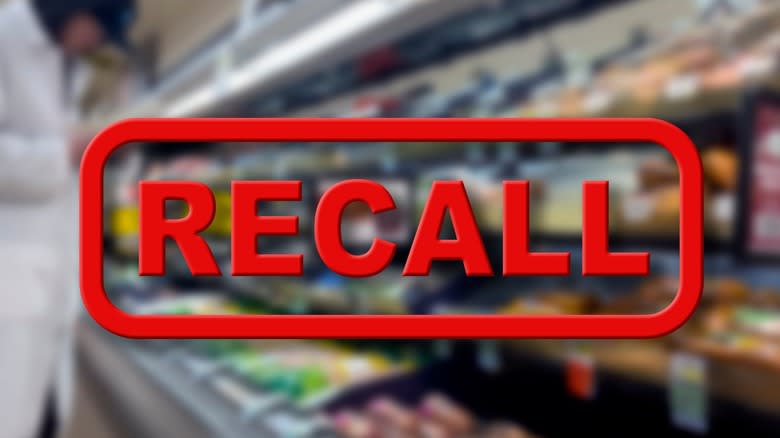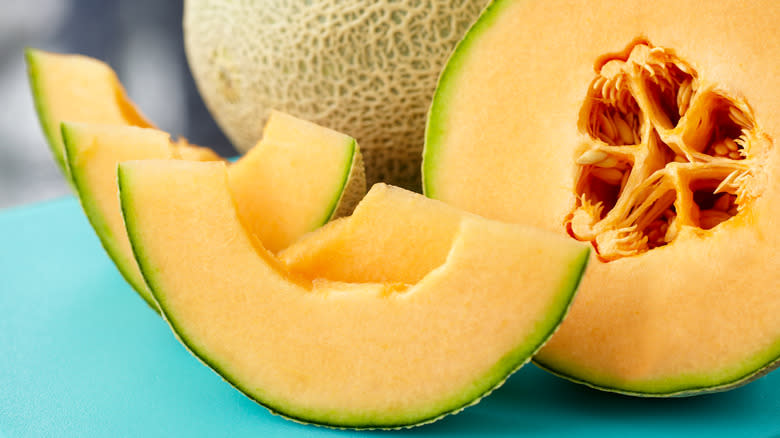Recalled Cantaloupe Linked To The Deaths Of 2 People

The Centers for Disease Prevention issued a salmonella outbreak notice on November 17, 2023, with a recall involving whole and cut cantaloupe. As of November 24, the CDC reports that two people have died and 45 have been hospitalized due to the cantaloupe-related salmonella infection. The fruit was sold widely across the United States under several brand names and as individual cantaloupe and in fruit medleys and trays. The Public Health Agency of Canada has issued a similar warning for multiple provinces in Canada.
The affected cantaloupes were marketed under several names, including Vineyard, Freshness Guaranteed, Malichita, RaceTrac, and Rudy. Still, as both health agencies warn, if you cannot determine the source of any cantaloupe you have purchased, you should not eat it. The affected cantaloupe was sold in October and November, so if you've frozen fruit for later use, the safest bet is to discard it as freezing does not destroy salmonella bacteria.
Read more: What Happens If You Accidentally Eat Mold?
Melon Is A Potentially Hazardous Food

If you think you had any of the potentially infected cantaloupe in your kitchen, carefully wash and sanitize your refrigerator and any food surfaces the melon may have been in contact with. Melons are grown close to the ground and can pick up harmful bacteria from the soil and fertilizers used in the field, so they should always be washed before cutting. Cantaloupes in particular are very difficult to clean because of their textured outside skin -- careful scrubbing with soap and water can help reduce but not eliminate any bacteria, and that bacteria can be carried onto the edible flesh of the melon during cutting. Because bacteria grow quickly at room temperature, always throw away cut melon when it's been at room temperature for 2 hours to help prevent illness.
Salmonella symptoms can start from six hours to six days after exposure, making it difficult to know the source of an illness. The infection can cause mild to severe gastrointestinal symptoms; if you think you may have been exposed, contact your healthcare provider.
Read the original article on Tasting Table.

